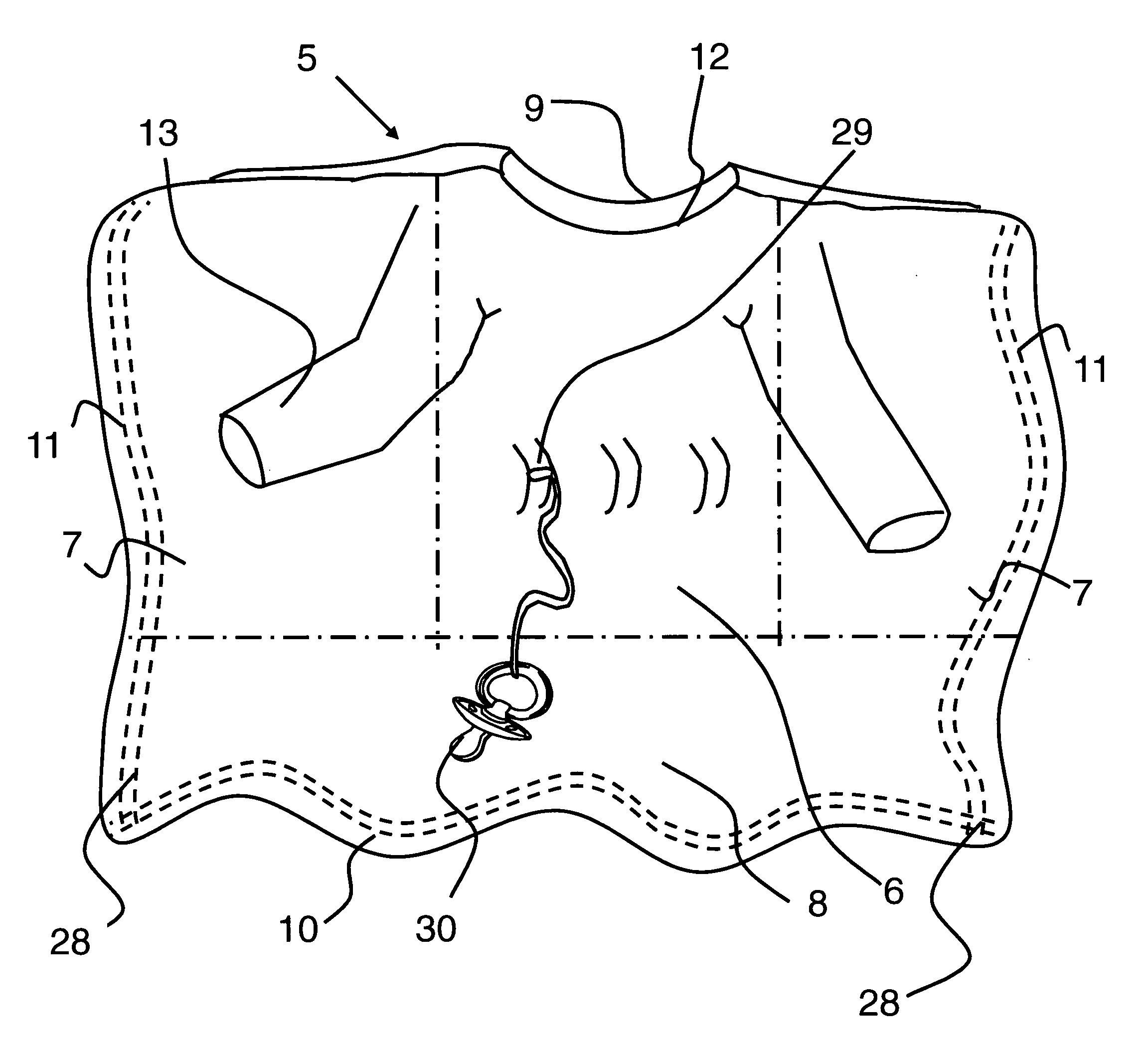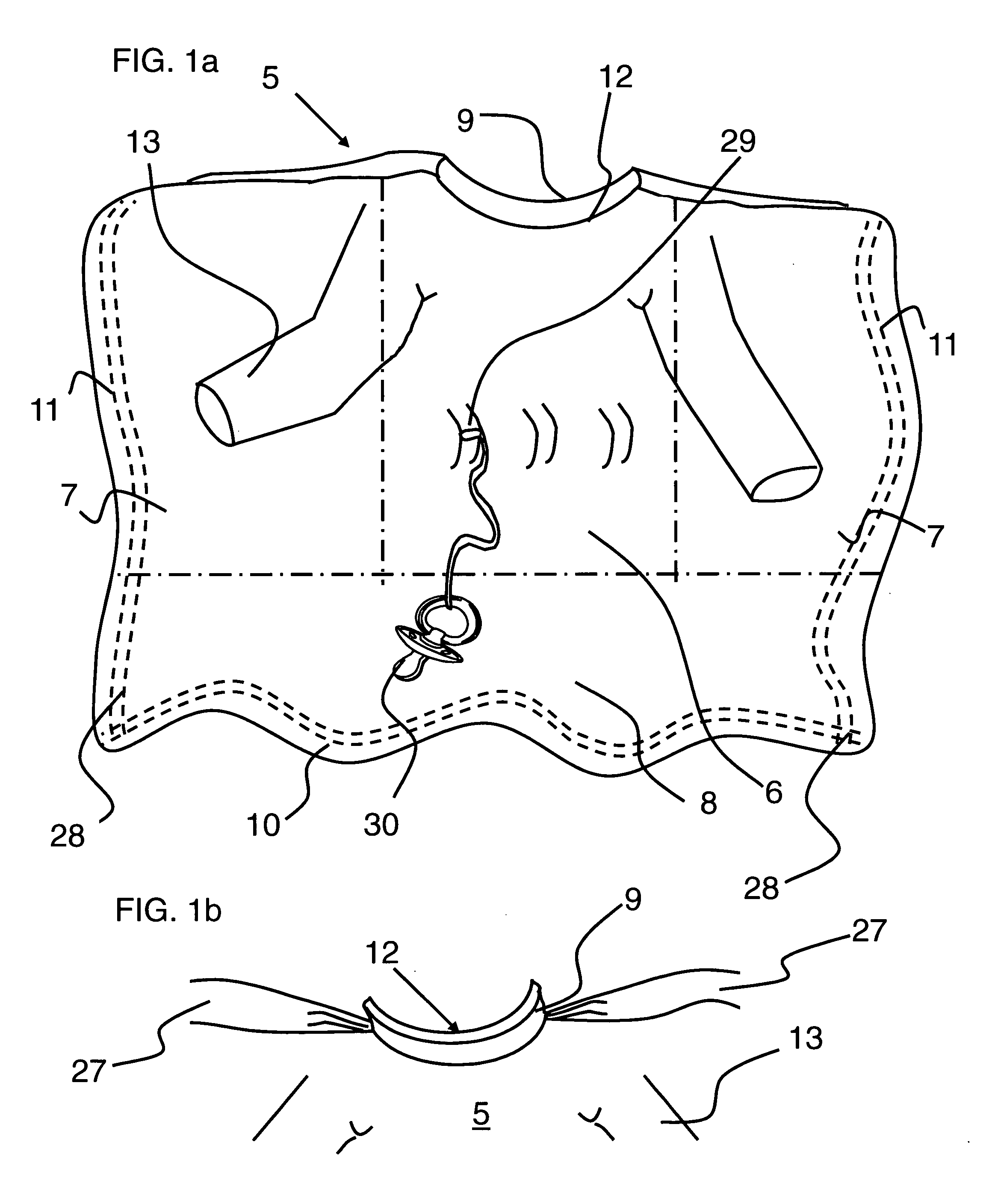Laws involving installation and use of child car seats are quite complex and rigorously enforced.
During winter months or cold, damp conditions, it is difficult to properly place a child within a
car seat, owing to the presence of winter clothing such as jump suits, jackets and the like.
Several blanket-sacs, buntings and bag-like articles have been provided for keeping infants warm when sleeping in a crib or cradle, but these blanket-sacs are not and can not readily function as travel blankets in car seats and strollers.
These garments, sac / bag-like articles are not capable of functioning in conjunction with a car seat or stroller and would interfere with proper safety
strapping procedures.
As a result, attempting to utilize these sacs / bag-like articles during travel in a car seat (or stroller) would require the child to be inserted into the blanket, placed into the car seat, and the safety straps of the car seat adjusted for awkward and improper buckling as these bag-like articles do not adequately provide entry pointes for proper placement of the safety straps.
Again, these articles are arranged to be utilized in a crib or cradle and are not capable of functioning, or adequately constructed, in conjunction with a car seat or stroller as these articles would interfere with safety straps.
As a result, attempting to utilize these articles during travel in a car seat (or stroller) would require the child to be inserted into the garment, placed into the car seat, and the safety straps of the car seat adjusted for awkward and improper buckling as these articles do not adequately provide entry pointes for proper placement of the safety straps and are not travel blankets.
Therefore, any application of the sleeved-bib articles as a blanket would be thwarted as a bib does not cover an infant's legs and does not provide a large enough surface area on lateral edges to offer blanket coverage to an infant's
torso.
Such car seat coverings must be applied to the seat before the infant is placed therein, and cannot be removed from the seat when the infant is lifted out.
Further, the infant can readily kick or pull on the blanket flap portion and
expose himself / herself to the cold, or cause
pooling of the flap near the infant's face thereby posing a suffocation risk to which the parent would not be aware of during driving.
Even where various travel blankets have been provided, these travel blankets fail to provide the ability to secure the blanket to the outer sides and bottom edges of a car seat / stroller seat, and as a result, a child can easily kick these travel blankets off from their feet, exposing the child to the cold.
Moreover, the disheveled blanket may fold or shift towards the child's face and
pose a suffocation
hazard.
Although these aforementioned disclosed travel blankets are provided with sleeves and portions to cover the infant in the car seat, these travel blankets require substantial manipulation and movement of the infant when they are being applied, and as a result the infant may awaken and / or become agitated and annoyed.
Moreover, wherein the infant is a newborn or very young, such movement may require less than delicate maneuverings.
That is to say, in application of these variously disclosed travel blankets, where: (i) those having hoods require that after the infant's arms are received in the sleeves, the infant's head must be elevated and angled acutely forward from the seat to be inserted in the hood; (ii) those having portions that must
wrap around to the back of the wearer's / infant's torso from the front operate to cause the parent /
care giver to substantially lean the child's body forward while still strapped in the seat, tending to result in a need to adjust the safety straps to provide ample room to extend the side extension / wraps behind the child's back—otherwise, the child would be in discomfort while the parent's hands are jammed behind the child's spine.
Surely, resulting in a cumbersome task, ultimately waking any sleeping baby and annoying any contented baby; and (iii) those having pouches or other leg and feet containment sections for receiving and housing the infant's legs and feet require the parent to literally lift the infant's legs and feet, bend or otherwise contort the infant's legs to force (which, if the infant is kicking can be quite traumatic) them into the pouch.
Such encasement of the infant's legs, while preventing the blanket from shifting therefrom, results not only in
mass manipulation of the infant's legs and feet, but an infant likely feeling overly constrained and agitated as the legs and feet become bound within the pouch or pocket.
 Login to View More
Login to View More  Login to View More
Login to View More 


